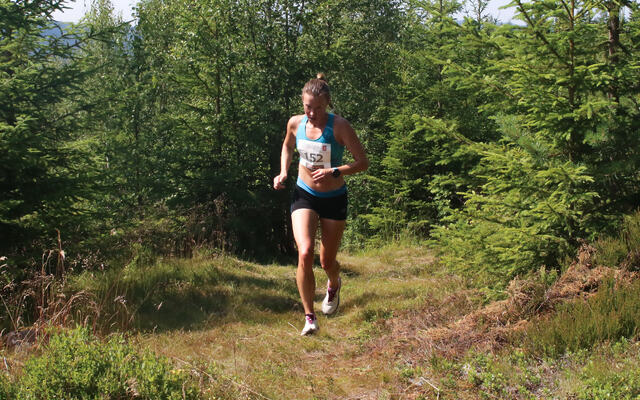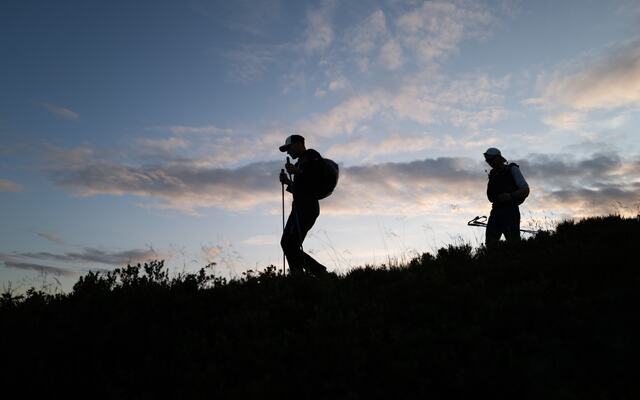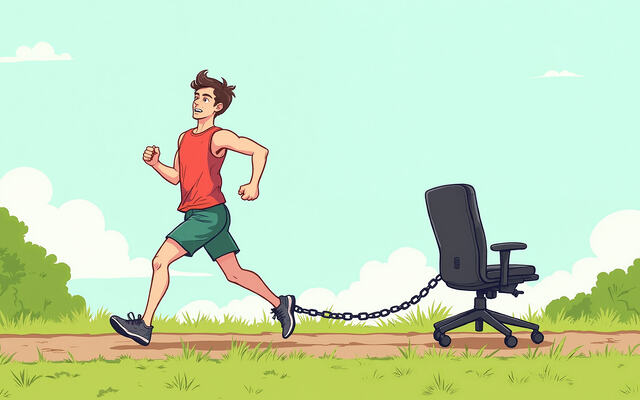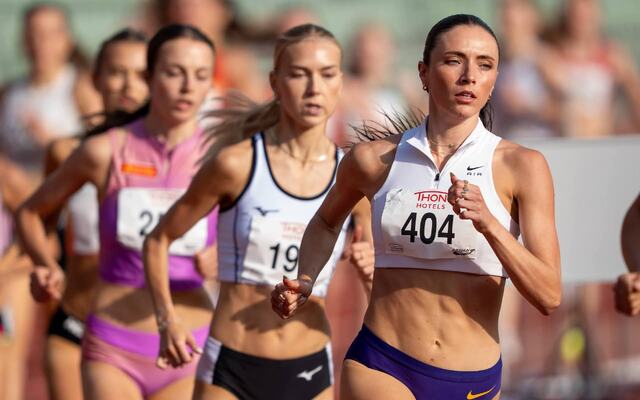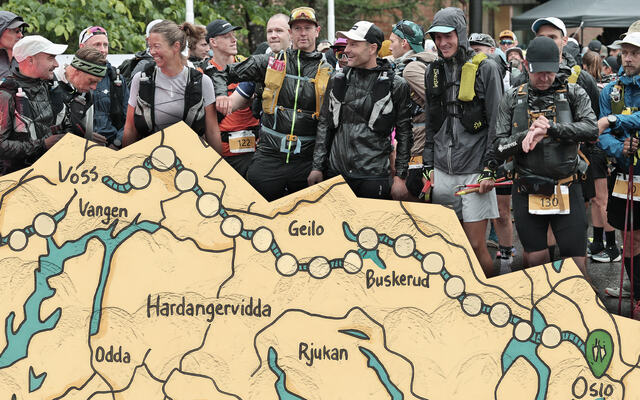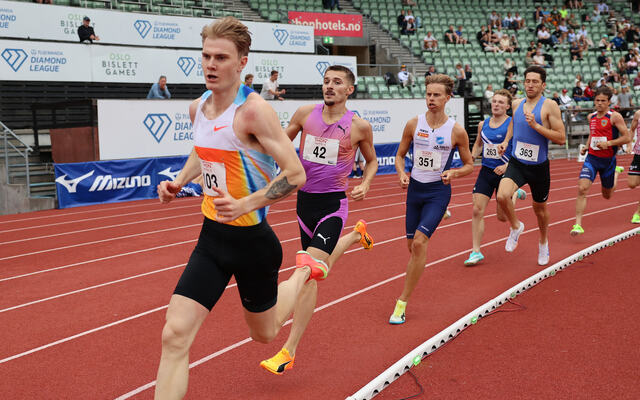| Kilde: Ultramarathon World Reflections on the Run Across America Huntington Beach, California, to New York City By Alan Firth Ultramarathon World New York (UW) - Between 2:30 pm and 3:00 pm on August 24, 2002, eight runners jogged into Central Park, New York, at the end of a 3,084-mile journey from Huntington Beach, California. And just like the previous 70 days, there was no fanfare of trumpets or clamor of press photographers and TV camera crews, just their crews and a few friends were there to congratulate them on the completion of their awesome journey. Eleven runners had toed the starting line on June 15, nine Japanese, one Swiss and one American. One of the Japanese, Yasuhiro Asai was ill on his arrival and he did not finish Day 3. Another, Koji Sekine, injured his knee on Day 19 and although he bravely battled on for a few more days his ankle then became injured and on Day 29 he could not make the cutoff on the very difficult stage from Steamboat Springs to Kremmling, Colorado. The only American in the race, Don Winkley, made the halfway point but was only just making the cutoff each day, which gave him very little time for rest and recovery. On Day 39 he withdrew, exhausted mentally and physically from his efforts. In the first week the runners had to overcome the Mojave Desert and temperatures in excess of 115° F in the shade (although there was no shade!) Going into Amboy, CA, a 41-mile day, the wind got stronger in the afternoon and it felt like the hot air which greets you when you open the oven door to check on the baking! They ran in those conditions for hours! Next it was the High Desert and temperatures were only in the low 100s. Slowly they climbed the foothills of the Rockies and it became cooler a few degrees at a time but all too soon they were over Berthoud Pass at 11,307 and down the other side where it was over 100° F for days and days. Longest stage Eastern Colorado gave them no respite and neither did Kansas. Missouri and Illinois added humidity to the mix! But then finally we awoke one morning in Tuscola, Illinois and it was cooler! Since this was the longest stage of the race, the relief came just in time. Good job too because now the daily stages were becoming longer. Everyone had been well aware that if the first half of the run had below average length stages, then the second half must have above average length stages! And here they came, one after another! But it wasnt just heat and humidity and distance the runners faced; we mustnt forget the hills! There are hills of all shapes and sizes all the way from LA to NY. There are long gradual hills like the 26-mile hill out of Amboy, CA, and the steep, 13-½ mile hill from Winter Park at 9110 to Berthoud Pass at 11307. Then there are the ones, which roll, from Denver across Eastern Colorado, Kansas and Missouri all the way to the Missouri River. And we find them too in Illinois, Indiana and Ohio. The corner of West Virginia near Wheeling, which we go through, is all hills! Then there are the short steep hills, which come one after another in Pennsylvania and Maryland, which coincide with the longer stages of the second half! We even go up Schooleys Mountain in New Jersey! If the heat is the first thing runners remember about the run, the hills will probably be the second. Only our few miles in New York cannot really be called hilly. Sometime during those 3,084 miles there was a race going on, but it wasnt for first place as Martin Wagen aged 33 from Switzerland dominated the field from the start winning every stage except three, and these he tied for. His was a wonderfully controlled run from start to finish and he made it look effortless. Even on those long, hot, humid days when it was almost unbearable, his comment at the finish was a mild, Today was too long! Recurring injuries It looked at various times as if there could be a race for second place but Shoji Nishi ran easily and without injury the whole way, whereas Yuji Takeishi was injured for much of the time. Every time he thought he could push a bit harder his injuries flared up again. In fact they had slowed him down so much that Nobuyuki Shimojima came within 7 ½ hours of him with 15 days of the race left, which led commentators to speculate whether he would try for third place. All were relieved when he didnt. It was interesting that there seemed to be a correlation between injury and weight loss, because all the injured runners had lost considerable weight (although not everyone who lost weight was injured). Martin and Shoji lost no weight at all. The two ladies, Kazuko Kaihata and Mariko Sakamoto ran superbly and this is the first time two women have finished in the same race across America. Only four women have completed a race across America, which means that 50% did so in Run Across America 2002. And just for the record we believe we had the oldest male to ever finish a race across America. Yasuo Kanai, aged 63, finished this years race strong and injury free. He did experience weight loss and injury earlier in the race but increased his caloric intake and decreased his speed for a few days and was soon running strongly again. We also believe we had the oldest female finisher, Mariko Sakamoto, aged 54. The most relaxed runner was Makoto Koshita who ran with a camera every step of the way, taking photos of everything that moved, and most things that didnt! He only put his still camera down to pick up a video camera -- but then he often carried both! Makoto could run fast when he wanted to but was just as content to be at the back of the pack. Nothing, but nothing, seemed to worry him at all. Magnificent crewing And the crews all did a magnificent job for their runners, under very tiring conditions. We did have a few moments: the fire hydrant that was knocked down, the crew vehicle that got stuck in the sand and the crew who fainted less than five minutes after exiting the freeway! But no one got even a single ticket! And what about Race Management? They had the time of their lives! Theyve never worked so hard before but then neither have they worked for such a nice group of people in such a common cause. They worked from before dawn until bedtime every day for 71 days. The tasks seemed never-ending: scouting the course; checking motel bookings; typing and copying each days Route Description; marking the course; taking the times; preparing a daily commentary; taking photos, typing up the results and uploading pages to the website every night. Would they do it again? Certainly! But not next year, as they have a date with the 1,200-mile Lands End to John oGroats trail in Britain. Itll have to be in 2004 and of course with the same stipulation as for this years racethat there are enough people interested to cover the expenses of the venture. Alan Firth was the race director of the 2002 Run Across America. |
Run Across America 2002 - refleksjoner
Alan Firth var "Race Director" for det 72 dager lange etappeløpet. Nedenfor kan du lese hans betraktninger om løpets forløp. Bilde: vinneren, Martin Wagen, går i mål
Siste medlemssaker
Annonse

